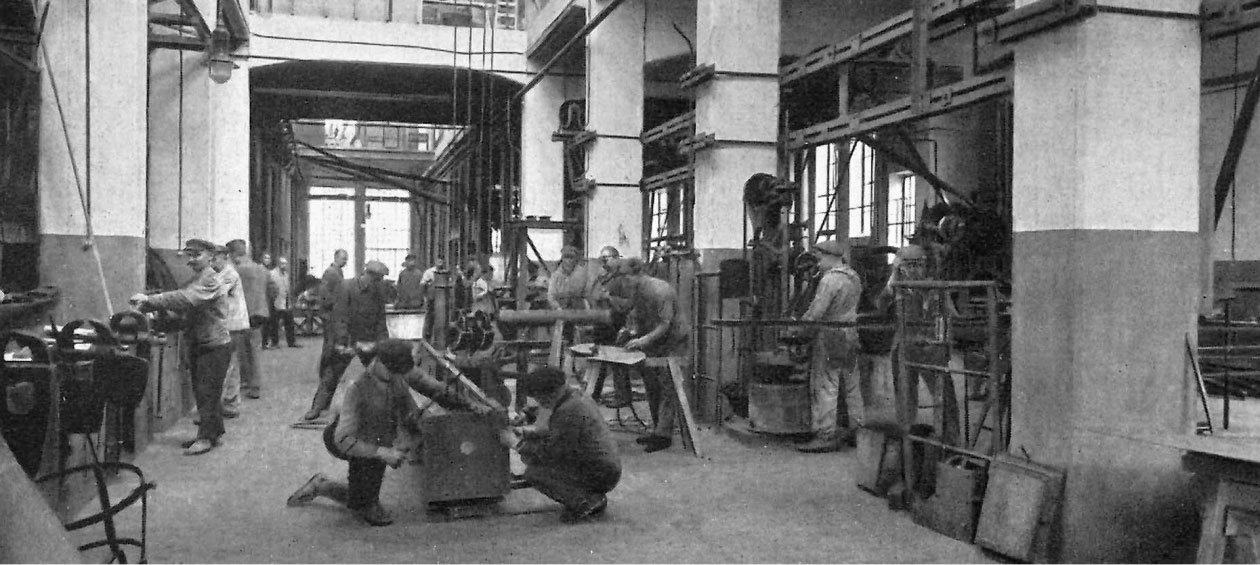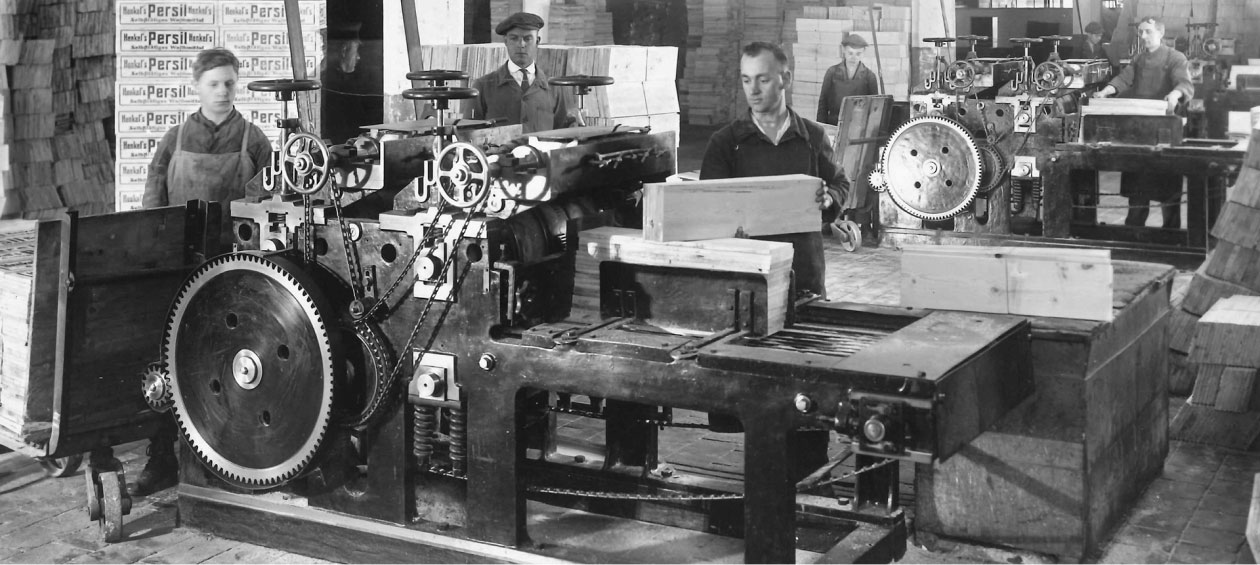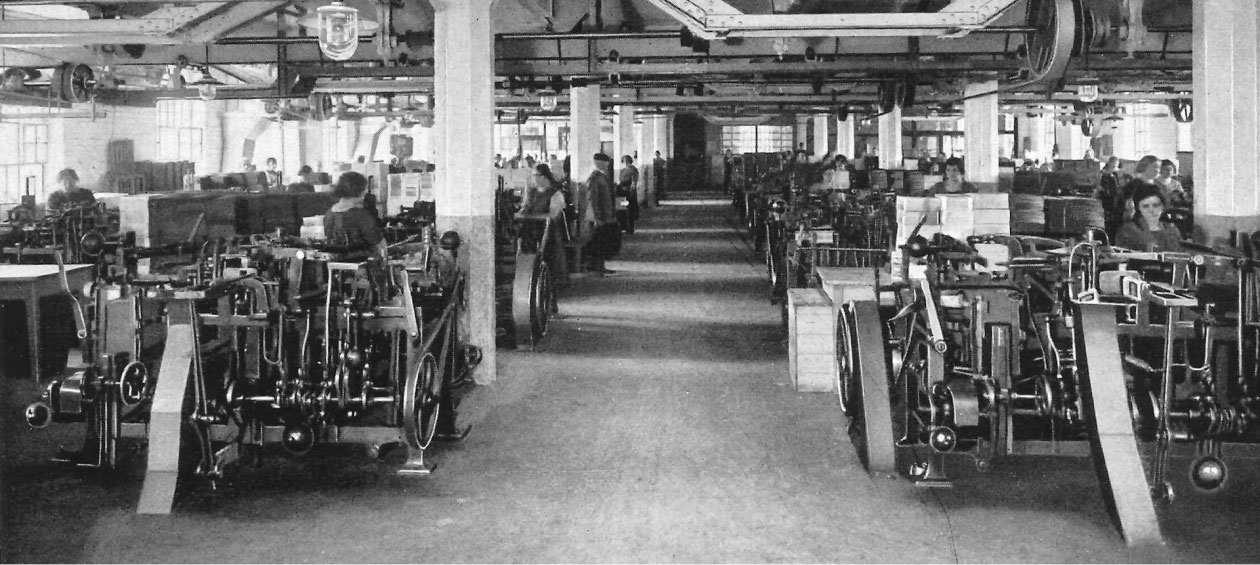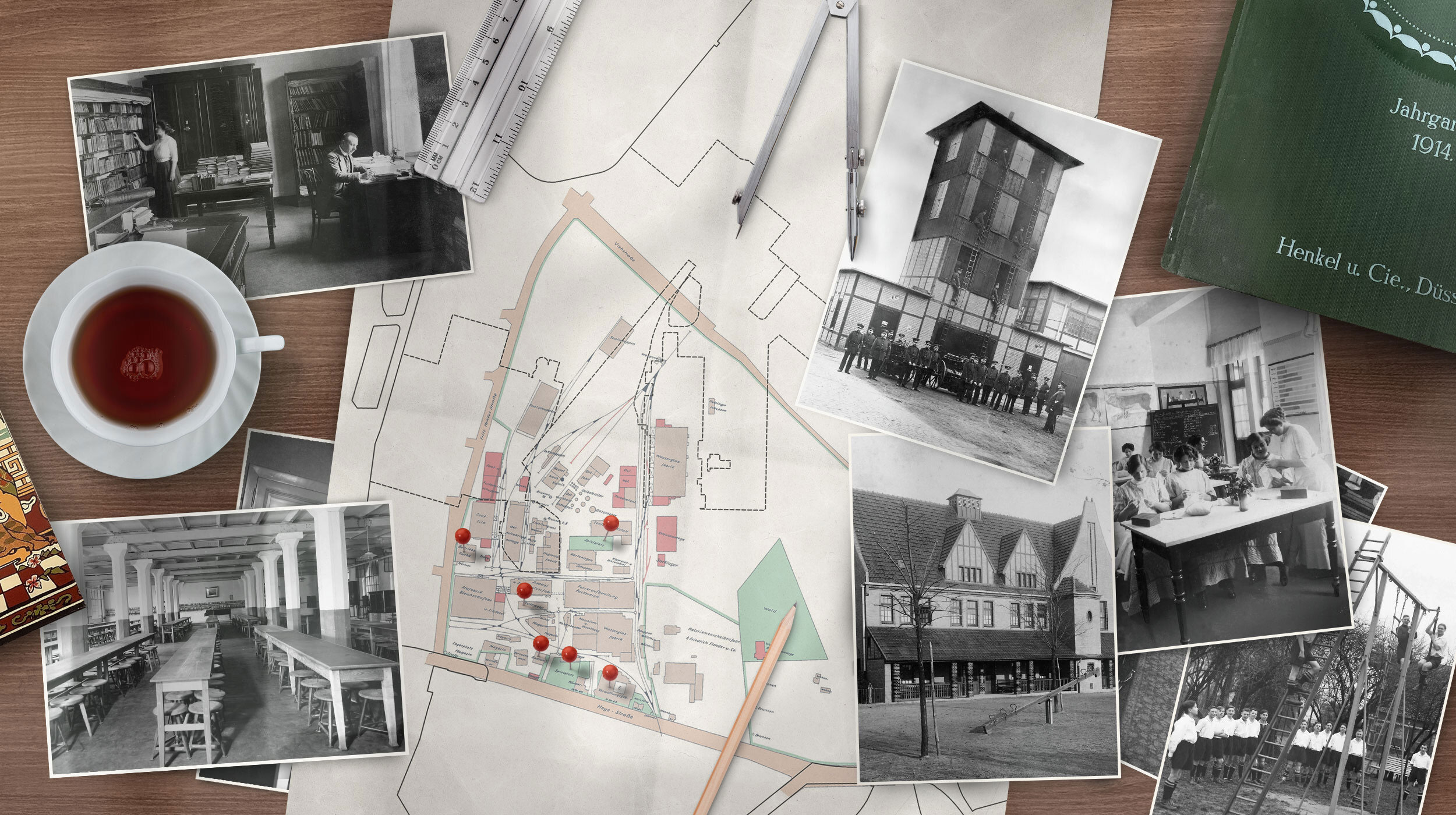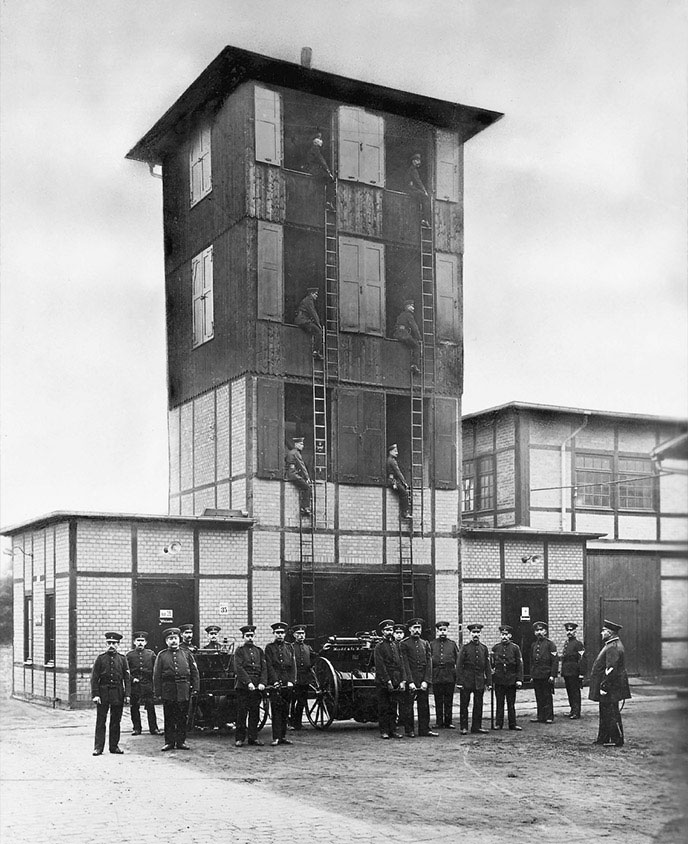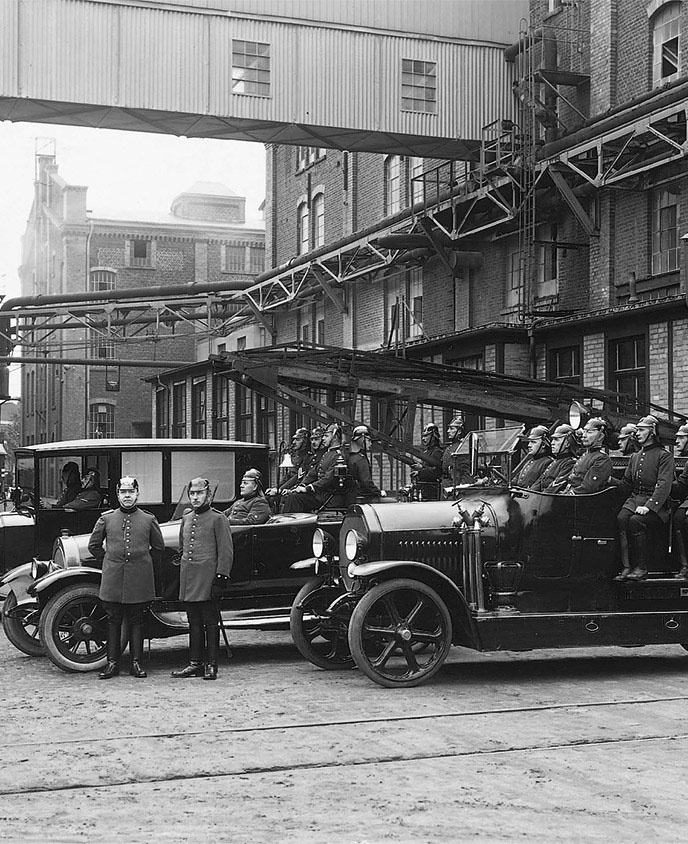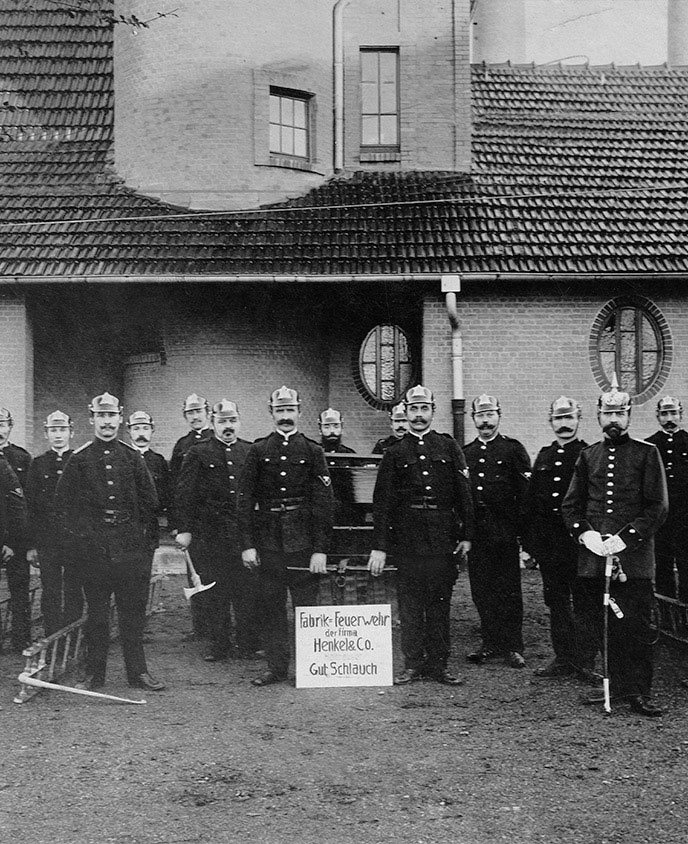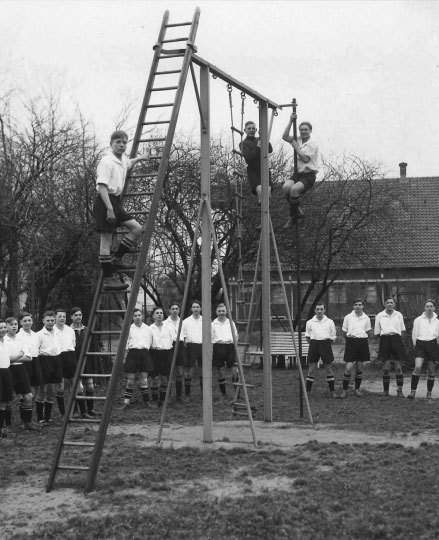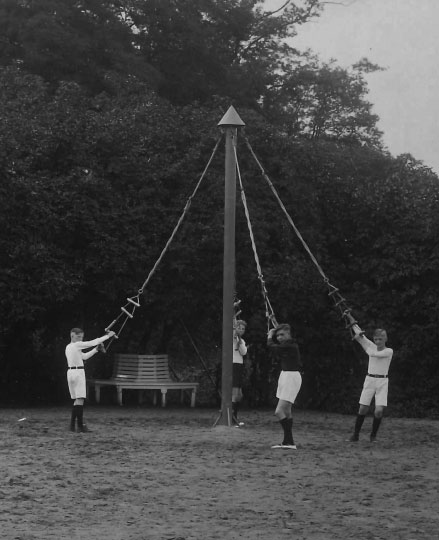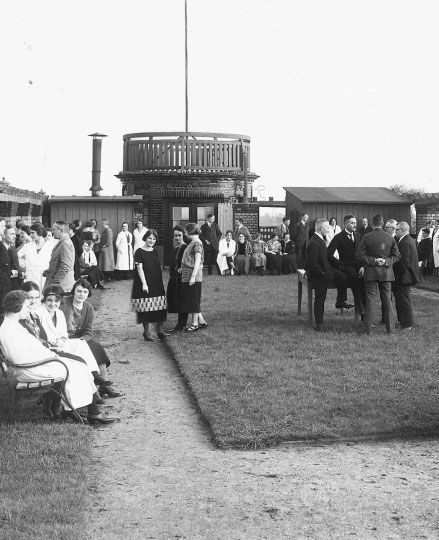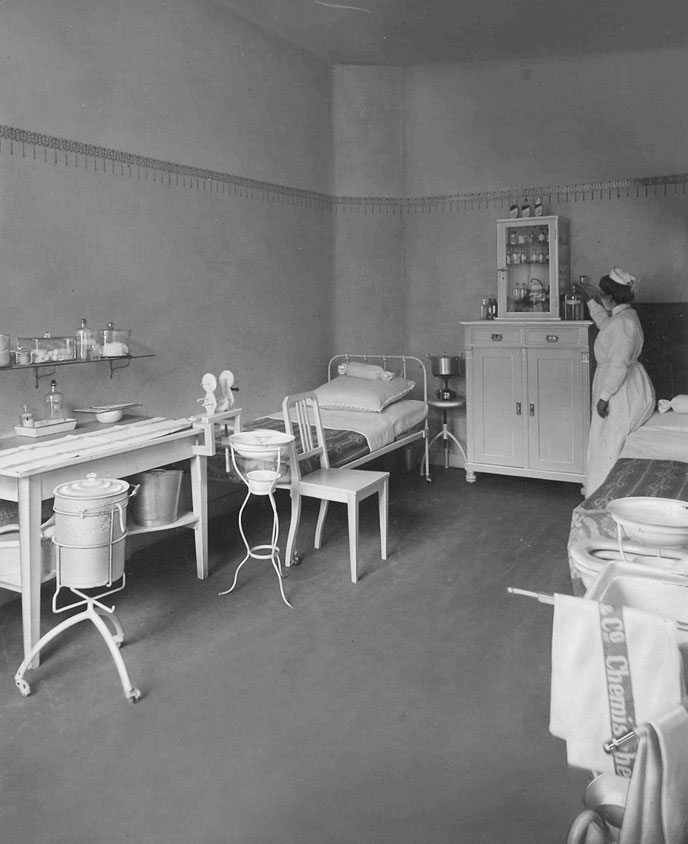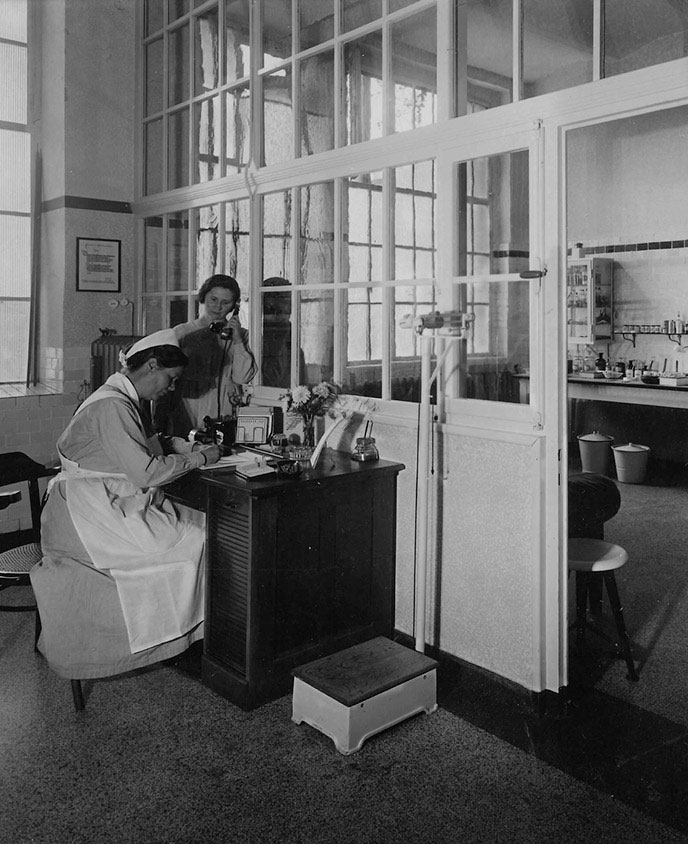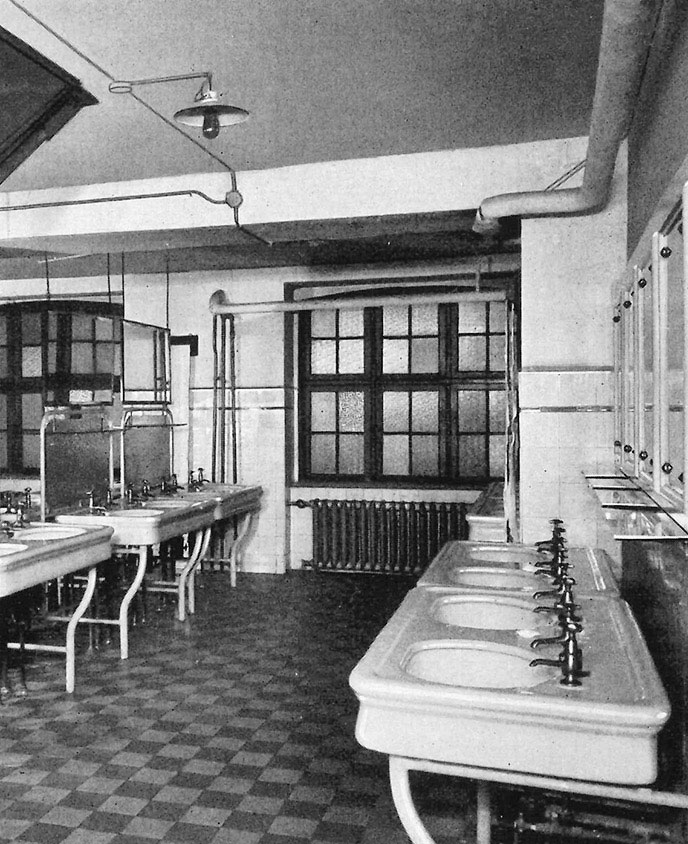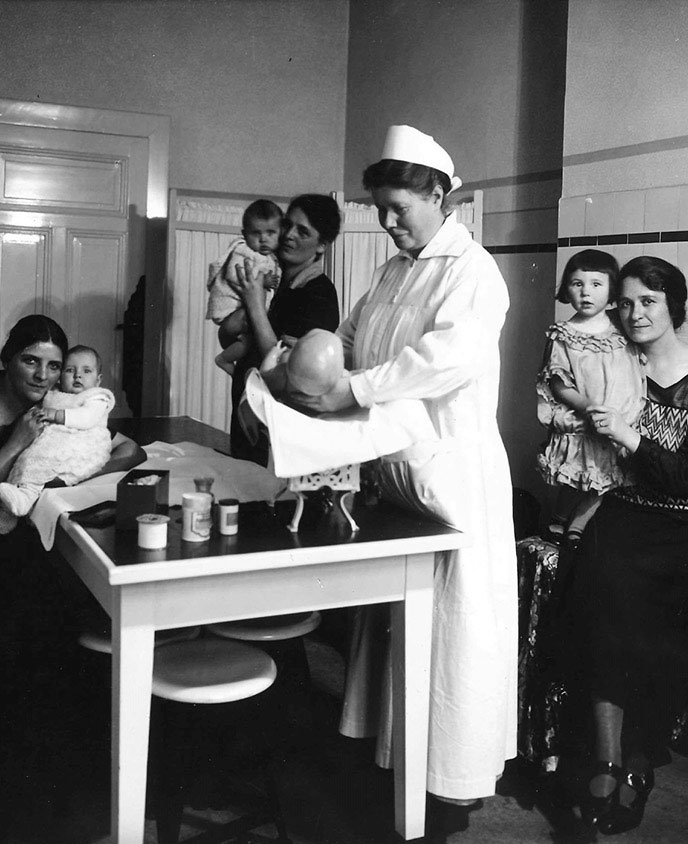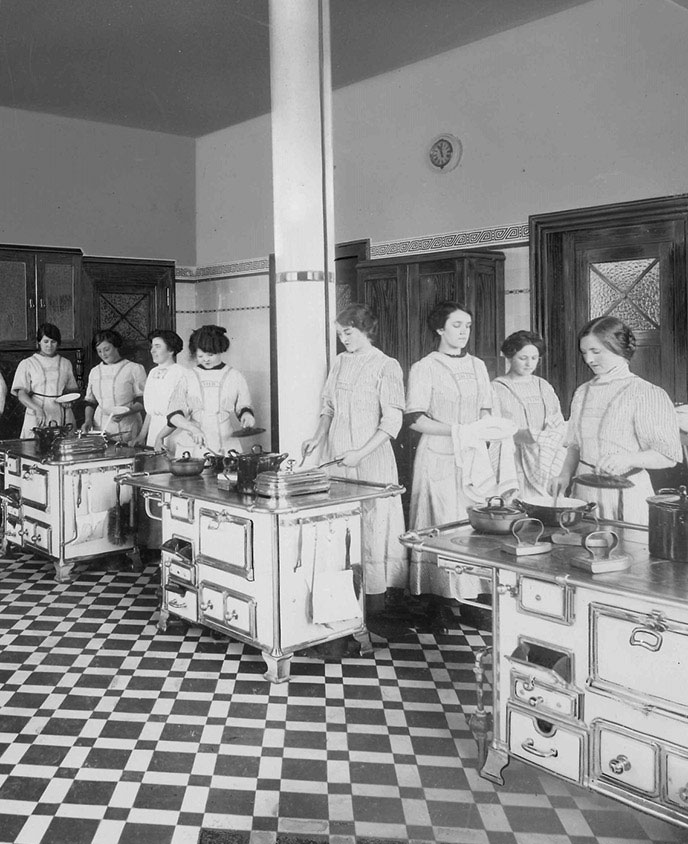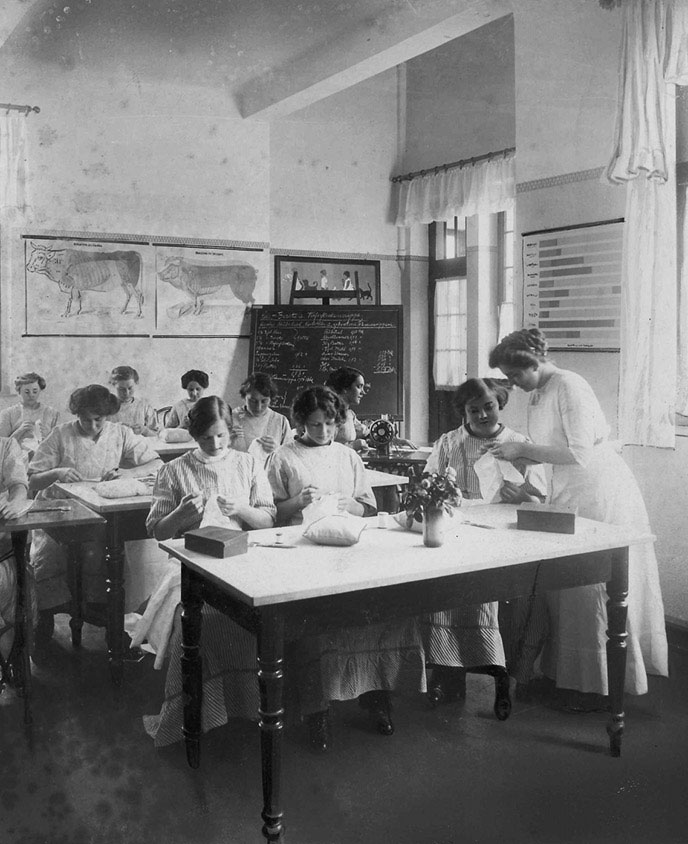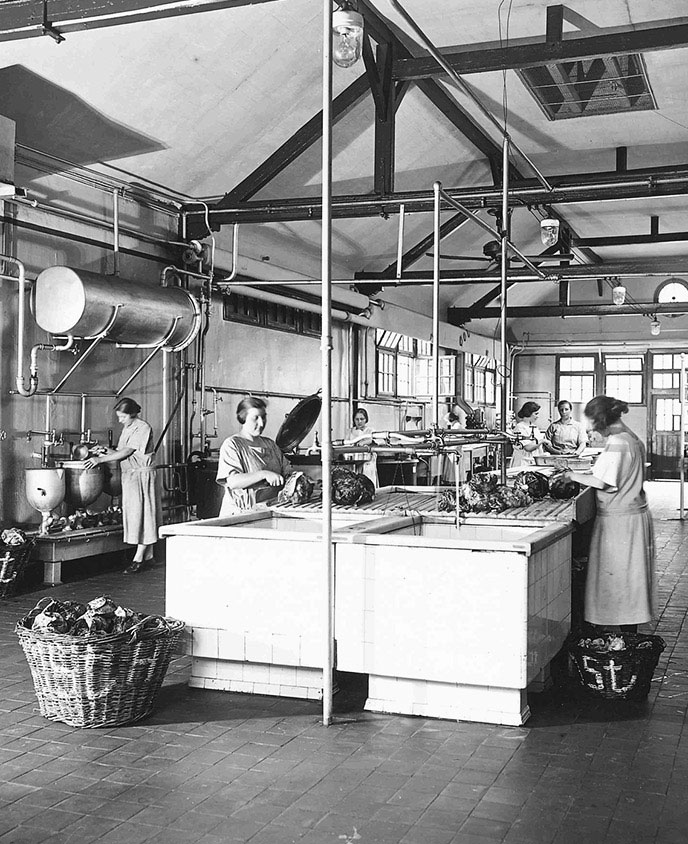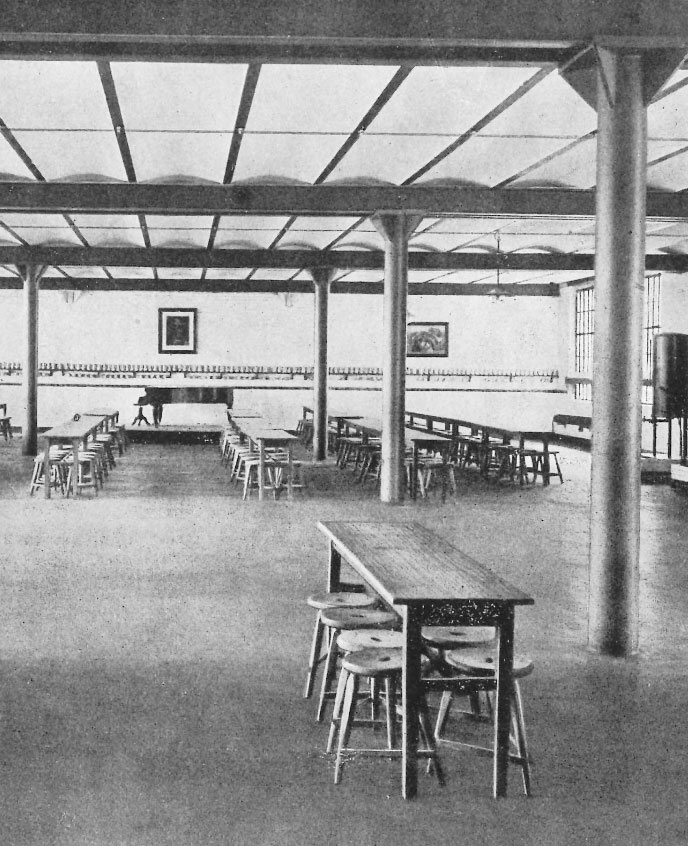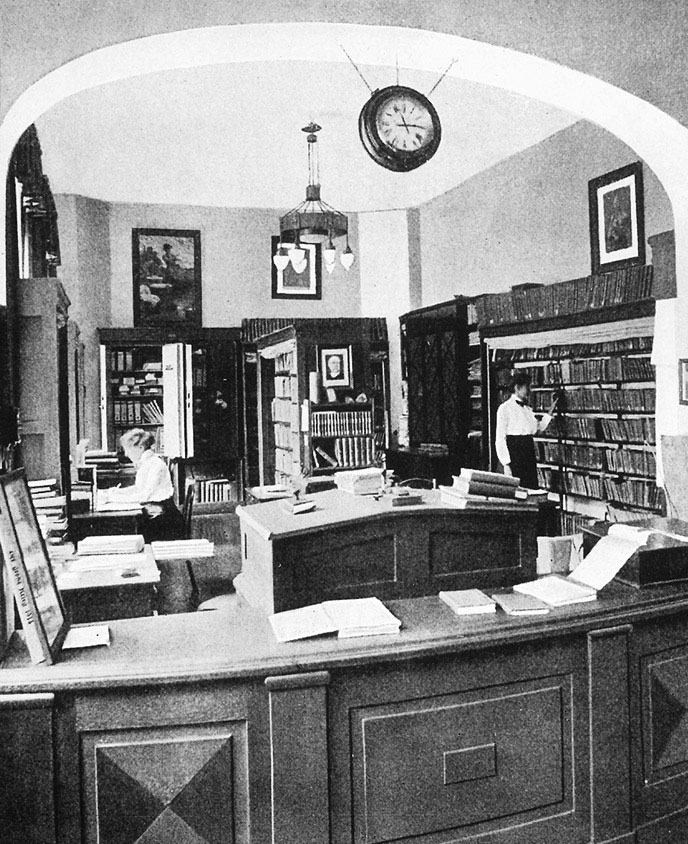Fritz Henkel and his employees
The people behind the company
“The best that came from my company came not from my own mind but from the way my employees worked together.”
Company founder Fritz Henkel looking back at his lifetime achievements on the occasion of the 50th anniversary of the company, 1926
The workforce
Even during Fritz Henkel’s lifetime, it was the Henkel workforce that stood behind the company’s success. Through their commitment in production, administration, development and sales, they made a critical contribution to the growth of the company. Without them, Henkel’s later international success would have been unthinkable. This section offers an insight into the everyday working lives of Henkel employees.
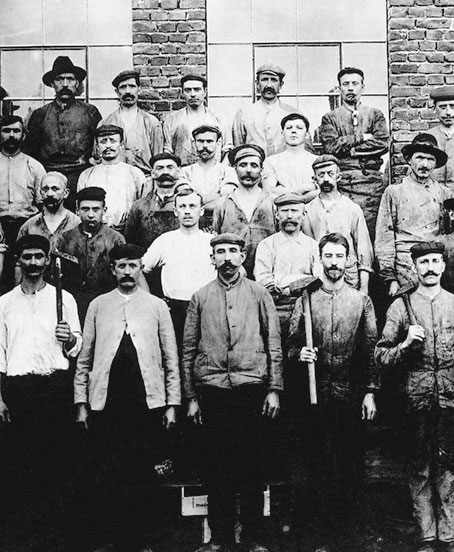
Blue-collar workers
Blue-collar staff included all craftspeople (except workshop managers) and all unskilled workers. As of 1925, apprenticeships were open at Henkel for people wishing to train metalworkers, lathe operators, carpenters and printers.
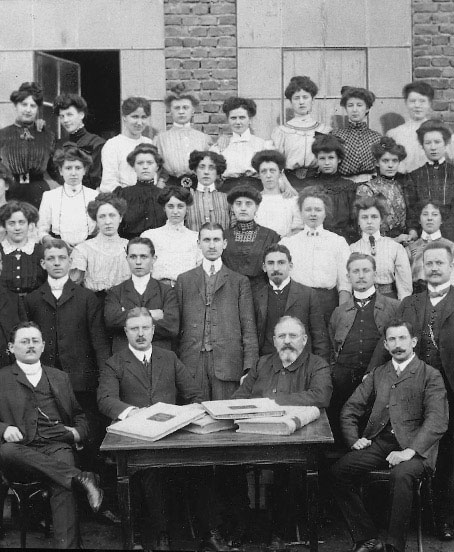
White-collar employees
In the first decades of the company, the white-collar employees were just a small group within the workforce. White-collar staff included office personnel, field sales reps, workshop and production managers, firefighters, and the so-called traveling instructresses (product demonstrators).
White-collar employees had certain privileges over their blue-collar colleagues. For educational purposes, for example, they received the newspaper “Düsseldorfer Stadtanzeiger” and after the company moved to Holthausen, a free lunch.
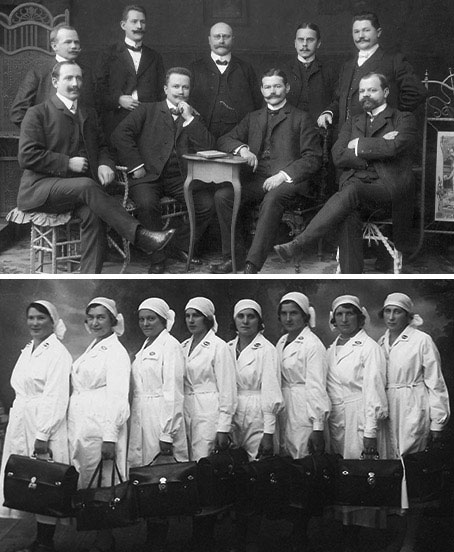
Field sales staff
In 1887 – at that time, Henkel’s Bleich-Soda (bleaching soda) was already being sold in 280 locations – the first full-time Henkel sales rep was hired. Soon a whole sales team was in place to sell Henkel products across Germany and later abroad as well.
In 1914, the field sales team was complemented through the advent of Henkel’s traveling instructresses. Their mission was to show housewives how to use Henkel products for best results. From the 1920s onward, separate teaching institutes were even set up to support their work.
The workforce is growing
People at Henkel
Mutual respect – a key to success
Fritz Henkel believed that his employees were the key to his company’s success.
The company’s founder attached great importance to a permanent and reliable core workforce. To retain his employees, he offered higher wages and a wide range of social benefits.
This paid off for both parties: With the Henkelaners enjoying extra perks and benefits, Fritz Henkel was able to retain his high-quality staff on a long-term basis.
You will find more information about Henkel’s social benefits further below.
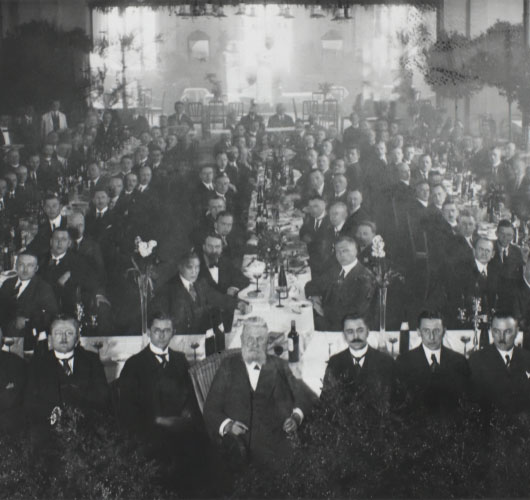
An accessible boss
Fritz Henkel was a disciplined worker and demanded the same work ethics from his Henkelaners. Yet he also cared for the wellbeing of his employees and made sure they had a good working environment. Keeping regular contact with his staff helped him to stay in the loop. The “old man” (as Fritz Henkel was lovingly called) would undertake daily site walkabouts, visiting all his departments. He would greet his employees kindly on these patrols, but he would also make it unmistakably clear if he saw something he disliked. Many employees considered the accessibility of the “old man” a sign of mutual respect and appreciation.

At the workplace
In the first decades, an increasing number of different skills were needed at Henkel. The majority of the staff were blue-collar workers. The male workers took on the heavy manual jobs both in production and in the workshops. The female workers were responsible for product filling and packaging or worked in the launderette. The initially few white-collar employees worked in the offices and – from 1905 – in the laboratory.
Acting out of conviction
Fritz Henkel believed that he and his company could only thrive if the employees were also able to. This attitude was reflected in the company’s wage, salary and staff policies, but also in its social policy. In the Düsseldorf region, Henkel soon gained the reputation of being a generous employer that took care of “its people.” This helped the company both to retain valuable employees and to attract new blood. It was frequently the case that Henkelaners would bring their relatives and friends along to join the company.
Well informed
In August 1914, Henkel launched “Blätter vom Hause.” It was one of Germany’s very first employee magazines and started with a circulation of 950 copies. The publication was designed to keep white-collar employees, in particular the field sales force, up to date on what was going on inside Henkel and to further strengthen employee loyalty. During World War I, the magazine served as the link between the company and the male staff serving at the battle front.

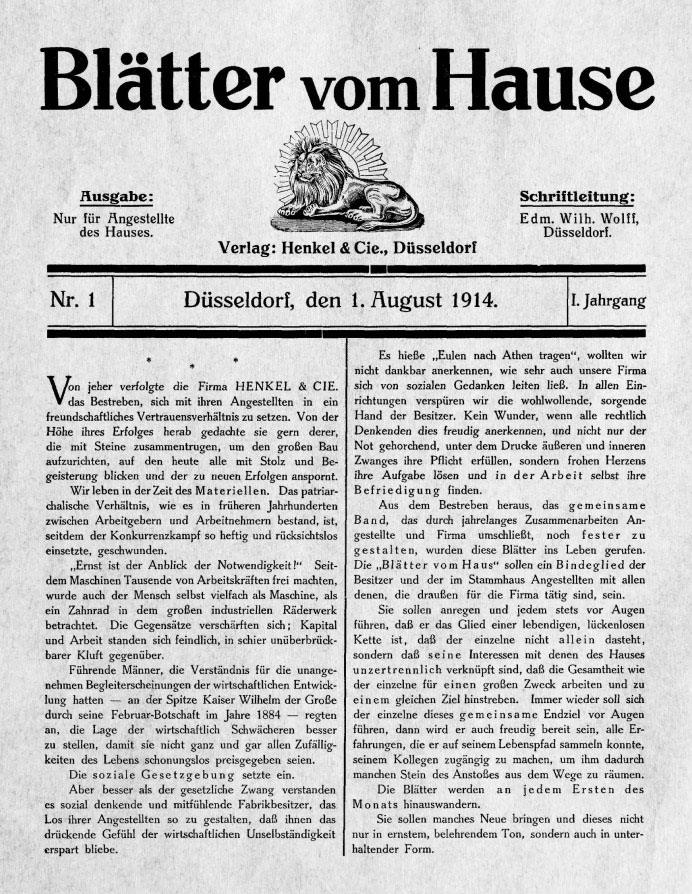
1914: First edition
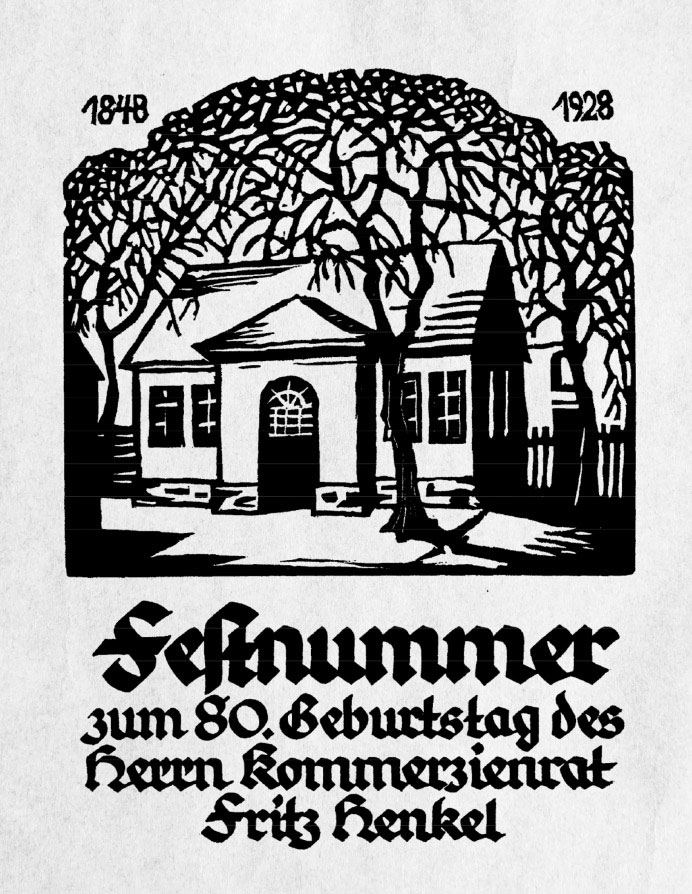
1928: Special edition on the occasion of Fritz Henkel’s 80th birthday.
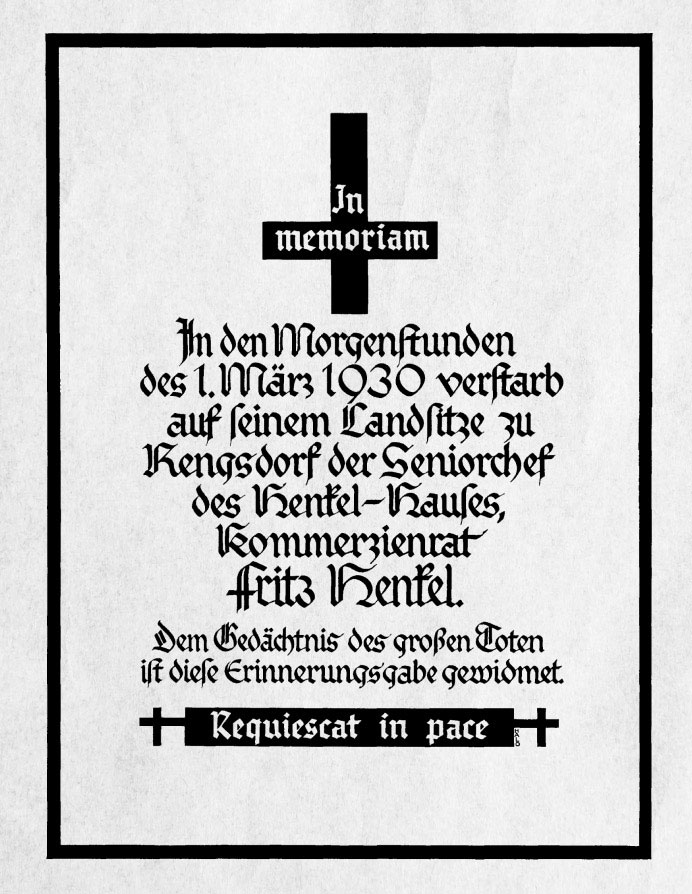
1930: Special edition on the occasion of the death of the company founder
Committed to his employees
As a socially minded entrepreneur, Fritz Henkel realized that the state pensions in Germany were not enough for a decent retirement. For this reason, he and later his sons endowed several pension funds for their staff – first for white-collar employees and then for workers as well. Anniversaries and birthdays served as the allocation dates.
Living Legacy
Fritz Henkel’s legacy continues to shape us today. In the next section you will find selected examples.




